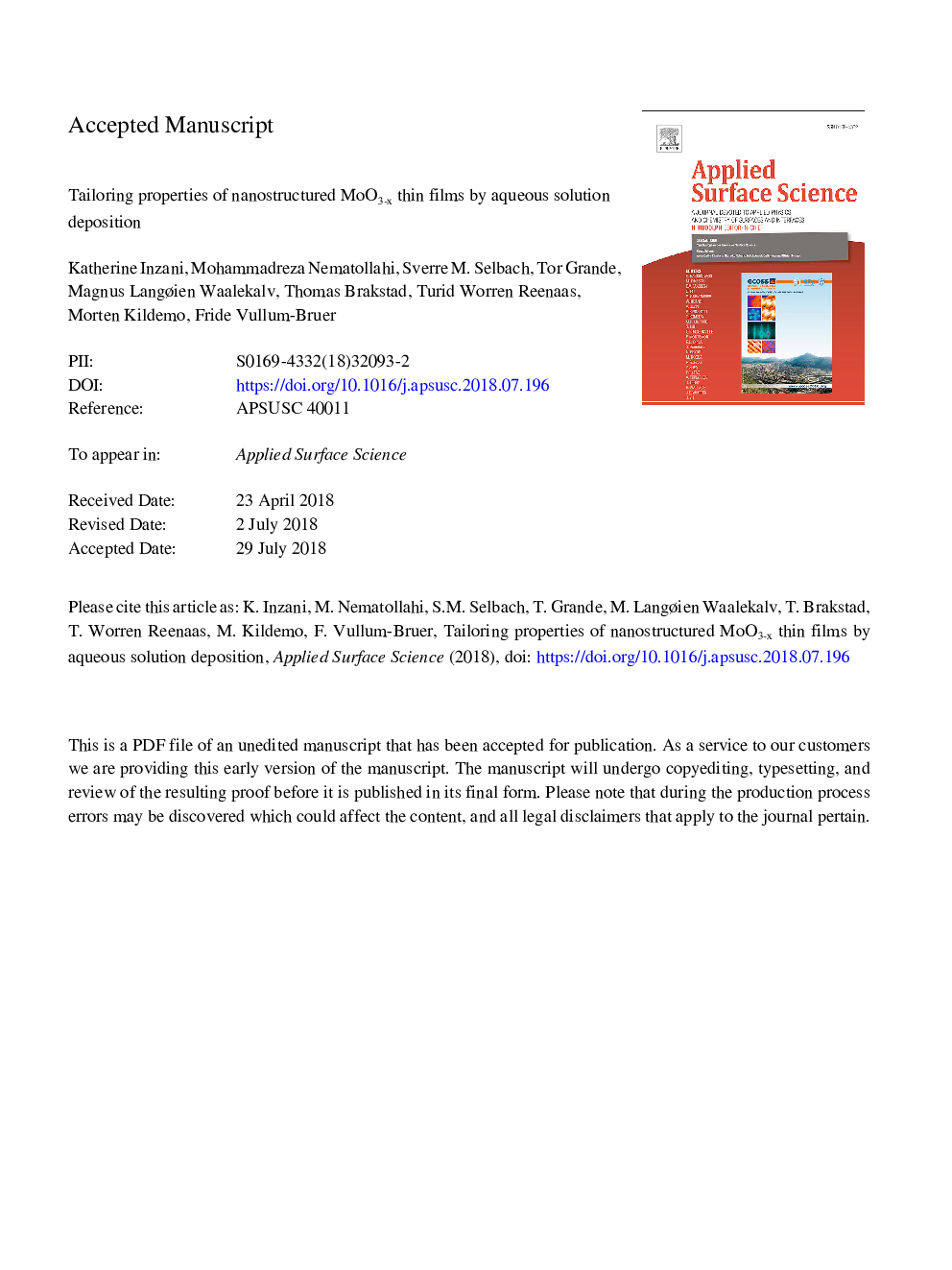| Article ID | Journal | Published Year | Pages | File Type |
|---|---|---|---|---|
| 7832965 | Applied Surface Science | 2018 | 30 Pages |
Abstract
Molybdenum oxide films are required for a large range of optical, electronic and catalytic applications, and optimal film characteristics are similarly broad. Furthermore, the layered crystal structure of MoO3 is suited to nanostructuring, which can be adapted to enhance the film properties. Here, we present a simple, aqueous route to MoO3 thin films and attain nanostructured morphologies by control of solution parameters. Smooth and homogeneous thin films were achieved by control of the molecular species in solution by pH. The sensitivity of film quality to pH was demonstrated with the addition of PVA to the solution, which resulted in large spherical particulates on the surface. Film thickness was adjusted from 10 to 60â¯nm, whilst maintaining good film quality, by changing the solution concentration. Moreover, the grain size and nanocrystallite orientation varied with solution concentration. The importance of film morphology is revealed in the compositional changes of the films during hydrogen reduction, with differences in breakdown of film coverage and growth of reduced phases. Furthermore, spectroscopic ellipsometry was used to determine the optical properties of the films. This revealed changes in the dielectric function and band gap that were dependent on the level of reduction. The nanoscale morphologies presented demonstrate the potential to precisely control film morphology, dimensions, oxygen stoichiometry and phase composition by a low-cost wet chemical route.
Related Topics
Physical Sciences and Engineering
Chemistry
Physical and Theoretical Chemistry
Authors
Katherine Inzani, Mohammadreza Nematollahi, Sverre M. Selbach, Tor Grande, Magnus Langøien Waalekalv, Thomas Brakstad, Turid Worren Reenaas, Morten Kildemo, Fride Vullum-Bruer,
